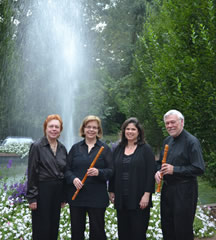Apparently, there’s sufficient consanguinity among virtuoso composers for the Charlotte Symphony Orchestra to decide, while belatedly celebrating Franz Liszt’s 200th birthday, to pair a couple of tone poems by the Hungarian composer with a couple of notable works by Sergei Rachmaninoff. Genealogists might have argued more convincingly on behalf of Richard Wagner, who married Liszt’s daughter, as a superior choice, and concert soloists or musicologists might have championed one of the piano concertos as a more substantial representation of Liszt’s talent and achievement. But guest conductor Grant Llewellyn entirely sidestepped the Liszt anniversary in his charming remarks to the Belk Theater audience, after guest soloist Joyce Yang achieved an undeniable sensation performing the famed Paganini Rhapsody.
The concert peaked early with a powerful rendition of Liszt’s “Mazeppa,” inspired by the story of a disgraced Polish nobleman who became a Cossack chief and a Ukrainian revolutionary. By the time Liszt composed his tone poem in 1851, the singular ride of Ivan Stepanovich Mazeppa (1639-1709) had been retold by Voltaire (1731), Lord Byron (1819), and Victor Hugo (1828). Strange to say, the CSO had never performed the work before, for the appeal of the score – evoking the mad dash of the wild horse that Mazeppa’s enemies had strapped him onto – is nearly instantaneous, spurred by the thrust of three trombones, pounding timpani, and a frenetic orchestral pace. Trombones wielded by John Bartlett and Thomas Burge, with added heft from bass trombonist John Driver, maintained a vicious level of ferocity until we reached a poignant midsection where a cello and a French horn ruminated eloquently. Llewelyn sculpted the overarching narrative colorfully and cohesively, so when the trumpets announced the final military episode, the triumph bore the stamp of inevitability.
“Mephisto Waltz No. 1,” on the other hand, was choppy and disjointed at the outset, as confused and disorganized as “Mazeppa” had been vivid. This more mature Liszt piece, also given its CSO premiere, soon coalesced into more spontaneous ensemble playing as the devil continued his rustic rampage. Principal cellist Alan Black and concertmaster Calin Lupanu excelled in the softer section of the tone poem, preceding an evocative peroration from principal flutist Elizabeth Landon. Almost anything would have sounded anticlimactic after the performance of the Rhapsody on a Theme of Paganini prior to intermission. It’s a piece that Llewellyn knows well, having recorded it on the BIS label just over two years ago, leading the North Carolina Symphony with Russian hotshot Yevgeny Sudbin at the keyboard. In terms of power, dexterity, delicacy, and emotional breadth, Yang never came up short, bringing with her an obvious zest for performing. Yang’s animation and involvement quickly won over the audience in her CSO debut. Llewellyn was anything but the passive accompanist as this concert favorite delivered moments of dreaminess, Russian folksiness, and jazzy syncopation in its kaleidoscope of variations, with fine filigree from clarinetist Eugene Kavadlo and French hornist Frank Portone adorning Yang’s exploits. The big tune had a luscious edge of melancholy as Yang caressed it, while Llewelyn drew splendid work from the violins in their rhapsodic outpouring. Nor was there any letdown from Yang afterwards as her final cadenza was suffused with tension and excitement.
Yang’s encore, Gershwin’s “The Man I Love” in an arrangement by Earl Wild, was a helpful gesture if the intent was to calm things down before the second half of the program. But even a second dose of Rachmaninoff, his Symphonic Dances, failed to rival the éclat created by the 25-year-old virtuoso in her turquoise strapless. Although this nicely proportioned dance trilogy, about one-and-a-half times the length of the Paganini, was the composer’s valedictory orchestral piece, Rachmaninoff wasn’t going out gently.
The first dance opened with a brusque insistence that was only slightly more benign than Prokofiev’s most rambunctious Romeo and Juliet theme, but we soon settled into a lovely duet between clarinet and oboe, followed by a lilting alto saxophone solo. Trumpets introduced the ensuing waltz section, with Lupanu and principal oboist Hollis Ulaky soloing on the heels of the frisky intro, before a Viennese languor set in. This gentility was pushed aside in a hectic speed-up ending the waltz section – abruptly followed by a fantasy finale. An eerie intro from bass clarinetist Alan Rosenfeld set the somber tone, with timpanist Leonardo Soto underscoring the portentous atmosphere. But the battery of percussion standing at the rear of the stage, including a rack of tubular bells, weren’t mere decorations. After some tasty crossfire between the trumpets and the French horns, Llewellyn deftly set Rachmaninoff’s final affirmation loose, ringing, gonging, and satisfying.












